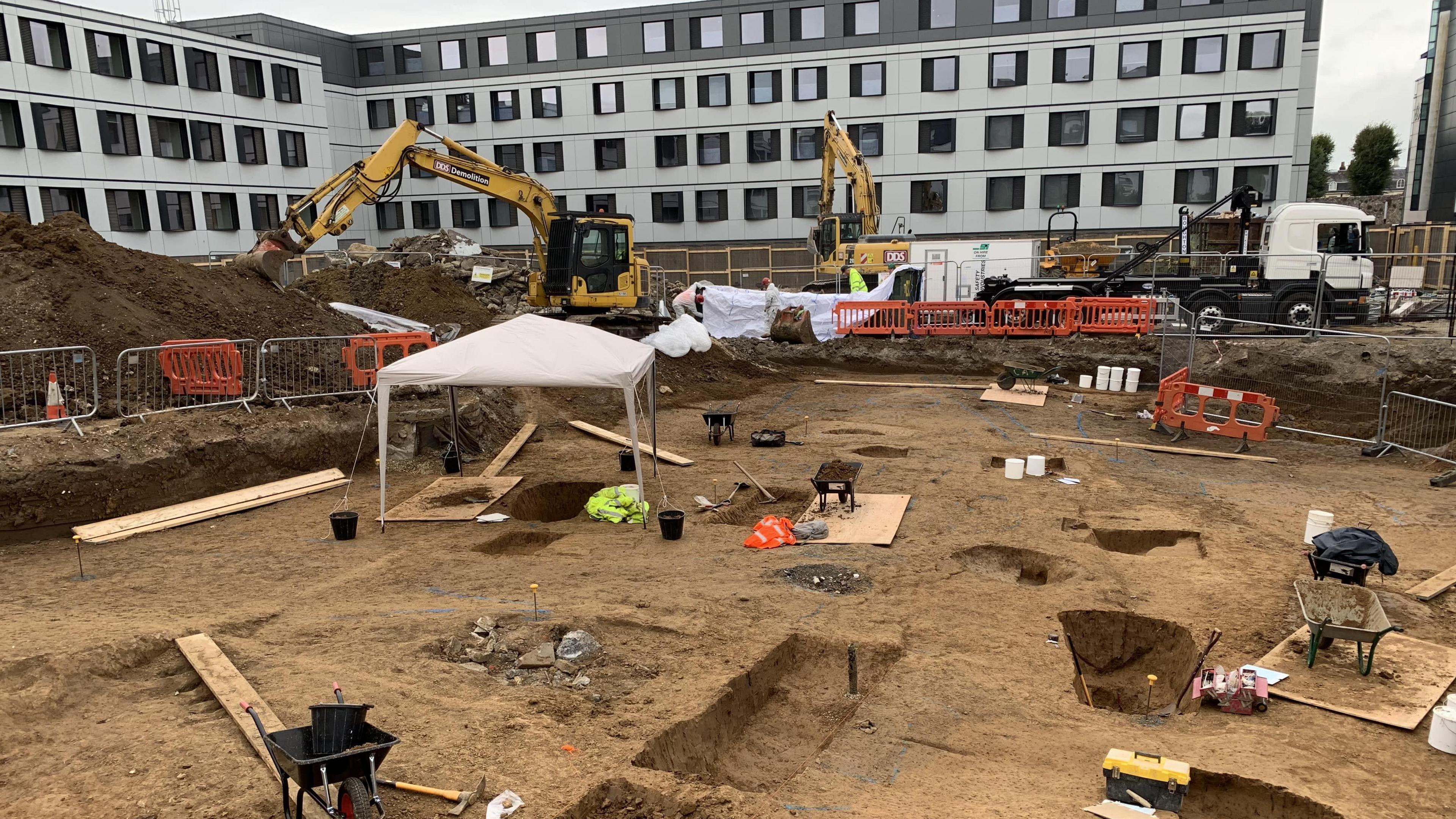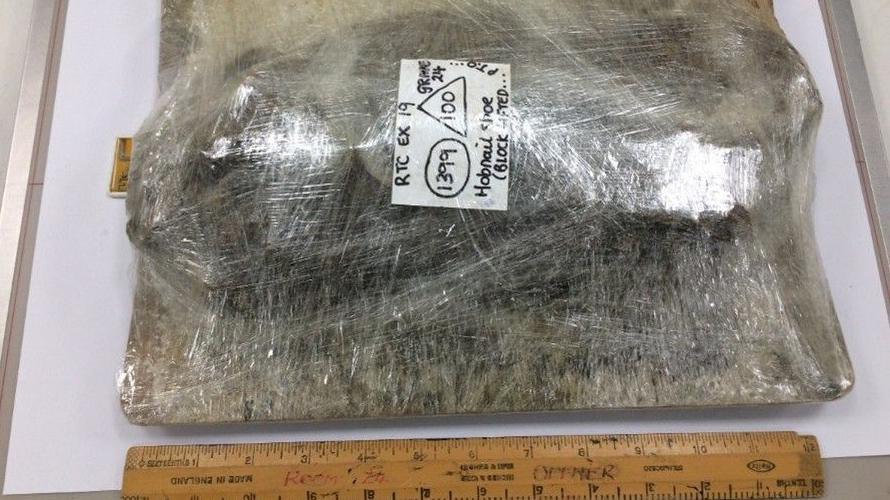Shoe scans offer 'tantalising' Roman life insight

The burial site, now student accommodation, was excavated in 2019
- Published
Researchers say their analysis of studs from disintegrated shoes is helping them understand ancient Roman fashion trends and burial practices.
Soil from a Roman cemetery in Canterbury was X-ray scanned to image hobnails from leather footwear contained within, even though the leather had disintegrated.
The scans were used to identify shoe designs and sizes, according to the study, providing "a tantalising glimpse into the clothing habits of the deceased".
Study co-author James Elliott said shoes were "an important part of the Roman psyche" and that the evidence found could be used "to reconstruct the profile of who these people were".
Researchers believe the Rhodaus Town burial site, which has become student accommodation since the 2019 dig, was active between the late 3rd Century and the mid-5th Century AD.
Over 200 graves were found at the site, of which about 50 contained hobnails.

A soil block taken from the site was scanned to observe the pattern of the hobnails
A range of footwear designs were identified, according to a study in the peer-reviewed Journal of Archaeological Science: Reports.
Some examples with many hobnails suggested design for "outdoor activities in keeping with robust boots" but others had "a more delicate design suited to towns and villas", the study reported.
Mr Elliott, the course director in diagnostic radiography at Canterbury Christ Church University, told the BBC various styles "can be linked to what age of Roman Britain this is most in fashion".

Researchers used x-rays of soil blocks from a burial site to learn about the shoes worn by people in Roman Britain
Researchers wrote that the designs matched other examples found elsewhere within Britain and the wider Roman Empire, which "reaffirms a common cultural affinity".
Shoe styles were "almost the same across the whole empire and that's why it makes it so useful for dating of sites", Mr Elliott said.
The study found the hobnail patterns could indicate information about a deceased person, such as their biological sex and social status, even without skeletal remains.
Study co-author Adelina Teoaca, of the Canterbury Archaeological Trust, said the research showed that "even small traces like nails from shoes can add a human dimension to the study of Roman burials".
Follow BBC Kent on Facebook, external, on X, external, and on Instagram, external. Send your story ideas to southeasttoday@bbc.co.uk, external or WhatsApp us on 08081 002250.
Related topics
- Published19 October

- Published3 October 2024
